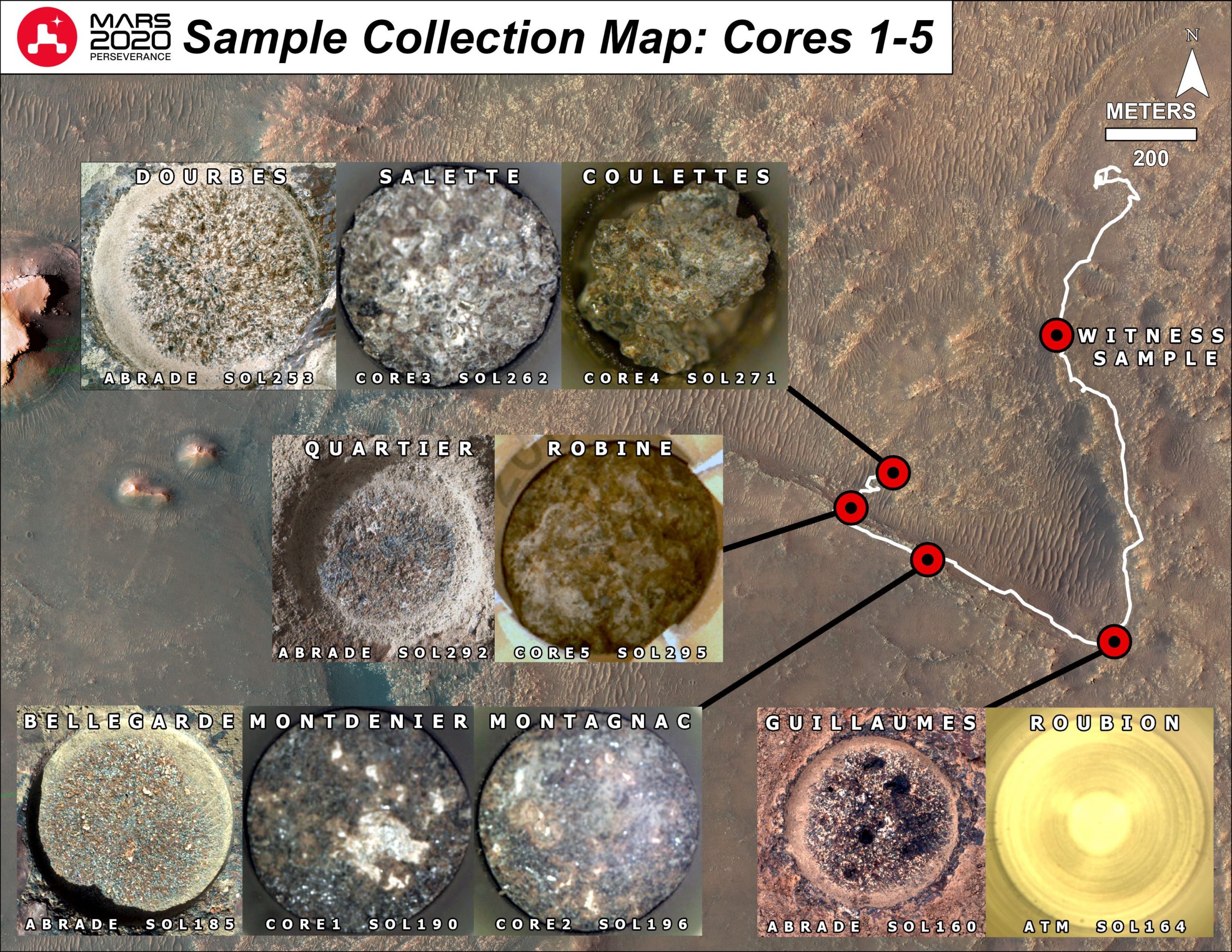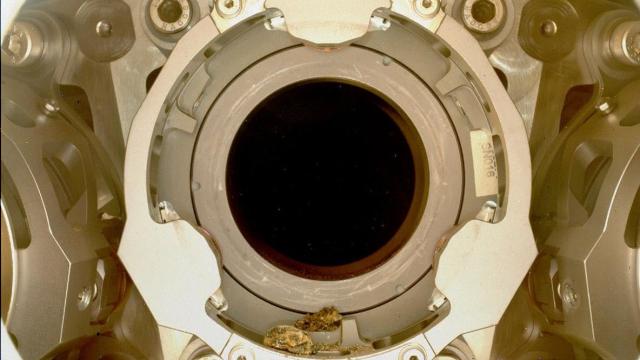The Perseverance rover has run into a snag, after a Martian rock sample extracted on December 29 didn’t transfer correctly into the rover’s long-term storage. NASA is currently working on how to remove debris from the rover’s machinery before proceeding with more sampling.
Louise Jandura, chief engineer for sampling and caching at NASA’s Jet Propulsion Laboratory, wrote in a NASA blog post that the issue occurred when the rock sample was being moved from the end of the robotic arm that drilled it onto the carousel that holds the sample tubes. Sensors on Perseverance track resistance when the coring bit holding the sample first comes in contact with the carousel, and this time, there was more drag than usual.
The Perseverance team pinged the rover for more data and imagery and told the rover to separate the drill bit and sample from the carousel. That separation occurred on January 6, and NASA got data on January 7.
Images from the rover showed several bits of regolith and pebbles; the team suspects that the debris are pieces of the cored rock that fell out during the drop-off process, keeping the drill bit from nestling neatly in the carousel.
Jandura noted that Perseverance is capable of doing the sample storage even with debris in the way, but as the $US2.7 ($4)-billion-dollar rover is still relatively new on the Red Planet and has plenty more science in store, the team hopes to clear the pebbles before continuing on with the mission.
The sample came from a rock outcrop named Issole, where the team hopes to collect a pair of samples from the crater floor in a region called Séítah, recognisable for its large, difficult-to-navigate sand dunes. Séítah’s rocks are of particular scientific interest, as noted in a NASA blog from November: “[B]y studying the directions that the layers tilted, we determined that the rocks of Séítah are likely the most ancient rocks exposed in all of Jezero crater. Séítah therefore represents the beginning of the accessible geologic record and offers a once-in-a-mission opportunity to explore the full breadth of landscape evolution.”

Eventually, the rover will make it to the western edge of the Jezero Crater, which is believed to be a dried-up river delta. Based on fossils of microbial life on Earth, the Perseverance team thinks the crater is one of the best locations to search for signs of ancient Martian life.
Perseverance brought 43 sample tubes to Mars, of which seven have been filled. The first and second tubes didn’t contain any rock, but the rest were successfully stored. By the end of the decade, NASA intends to bring those rock samples to Earth, where they could be analysed for years to come.
Of course, the rover needs to get over the recent sampling hurdle first. But it was named Perseverance for a reason.
More: Perseverance Rover Images Reveal Ancient History of a Water-Soaked Martian Crater
